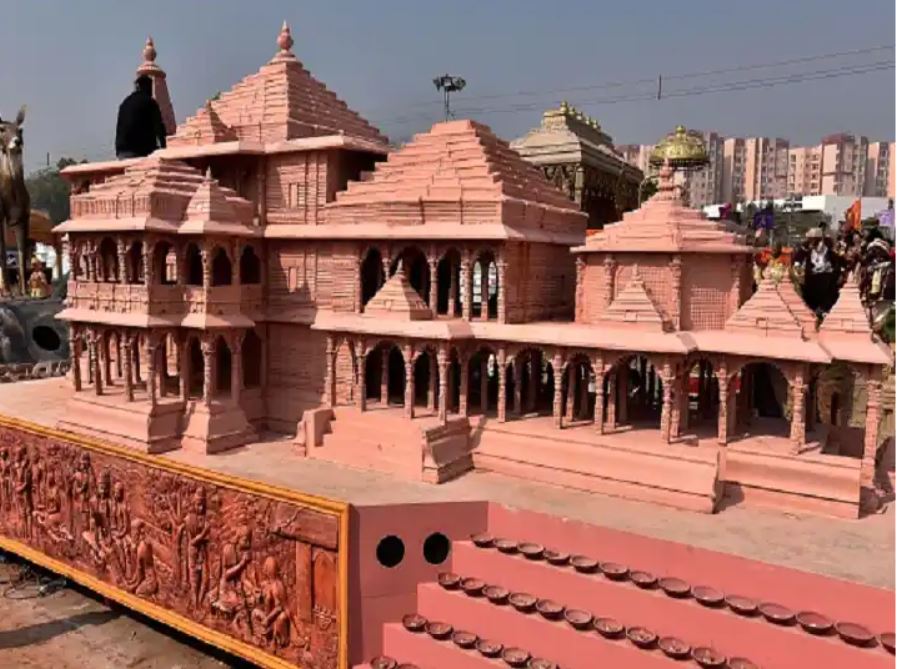Ayodhya's Shri Ram Mandir showcases a harmonious fusion of Nagara and Kalinga architectural styles, boasting numerous spires and intricate carvings. Spanning 380 feet in length, 250 feet in width, and towering at 161 feet, the temple rests on a robust 21-foot thick granite plinth. Comprising pink sandstone from Bans Paharpur, as well as granite stone from Karnataka and Telangana, the foundation exudes a solid structural foundation.
Elevated on a platform with three storeys, the main structure features five mandapas within the garbhagriha and entrance passage. Envisaged to house 46 doors, 42 of which will be adorned with gold plating, the temple's design is deeply rooted in Hinduism, particularly influenced by the Nagara style that has left an indelible mark on temple architecture across India.
Heading the architectural endeavor is Chandrakant Sompura, the chief architect of the Ram Mandir. With over three decades of involvement in the project, Sompura, alongside his architect sons Nikhil and Ashish Sompura, presented a new design in 2020, drawing inspiration from Hindu texts, Vastu shastra, and Shilpa shastras.

Designed in the Gurjara-Chaulukya style of Nagara architecture, predominant in northern India, the temple primarily employs materials like pink sandstone, white marble, rolled compacted concrete for the foundation, Shaligram rock, copper plates, gold, Ashtdhatu, teakwood, and granite from Telangana and Karnataka. Flooring materials are sourced from Madhya Pradesh.
Crafted to withstand seismic activity, the temple avoids the use of iron to prevent rust. Its foundation, a robust 14 meters thick, is composed of rolled compacted concrete layers containing stone ash, stone powder, and cement. The base includes 56 layers of compacted concrete made from fly ash, dust, and chemicals. Originally on loose
sand, the foundation underwent transformation through scientific processes. The 21-foot thick granite plinth serves as a safeguard against moisture infiltration.
